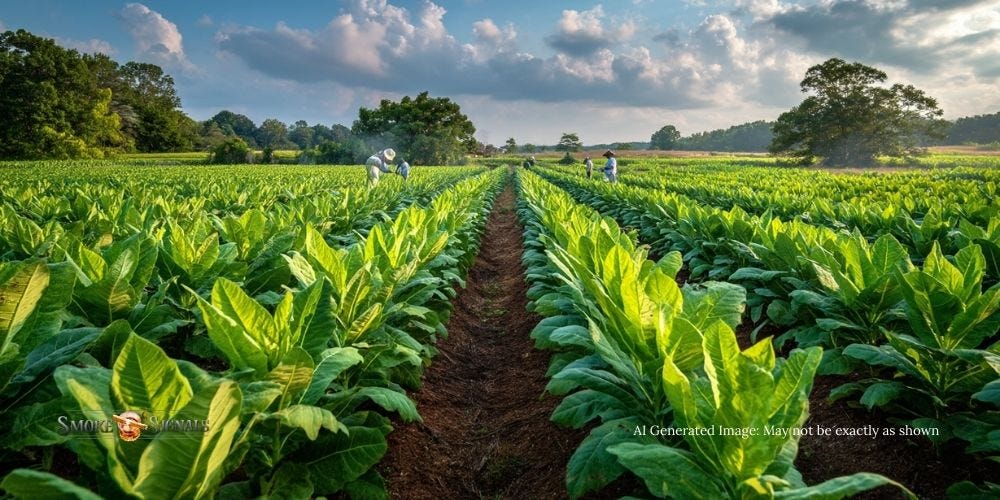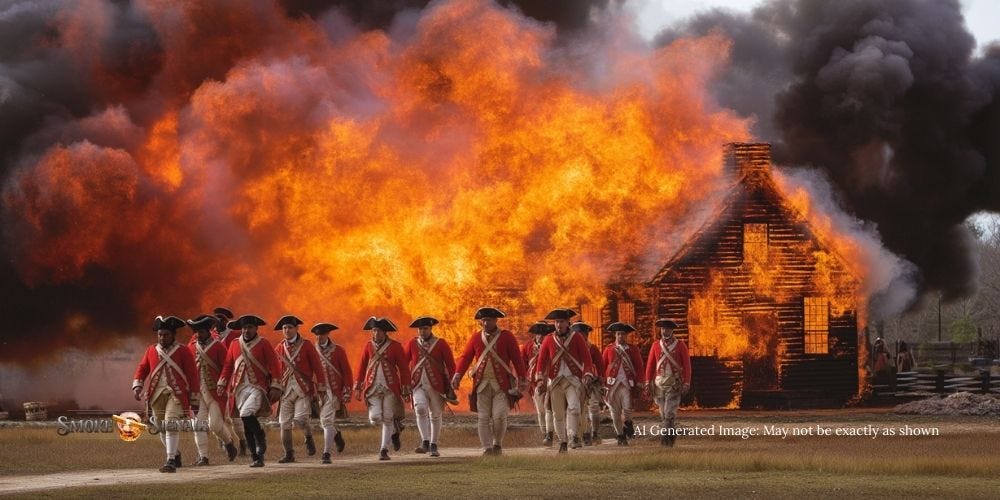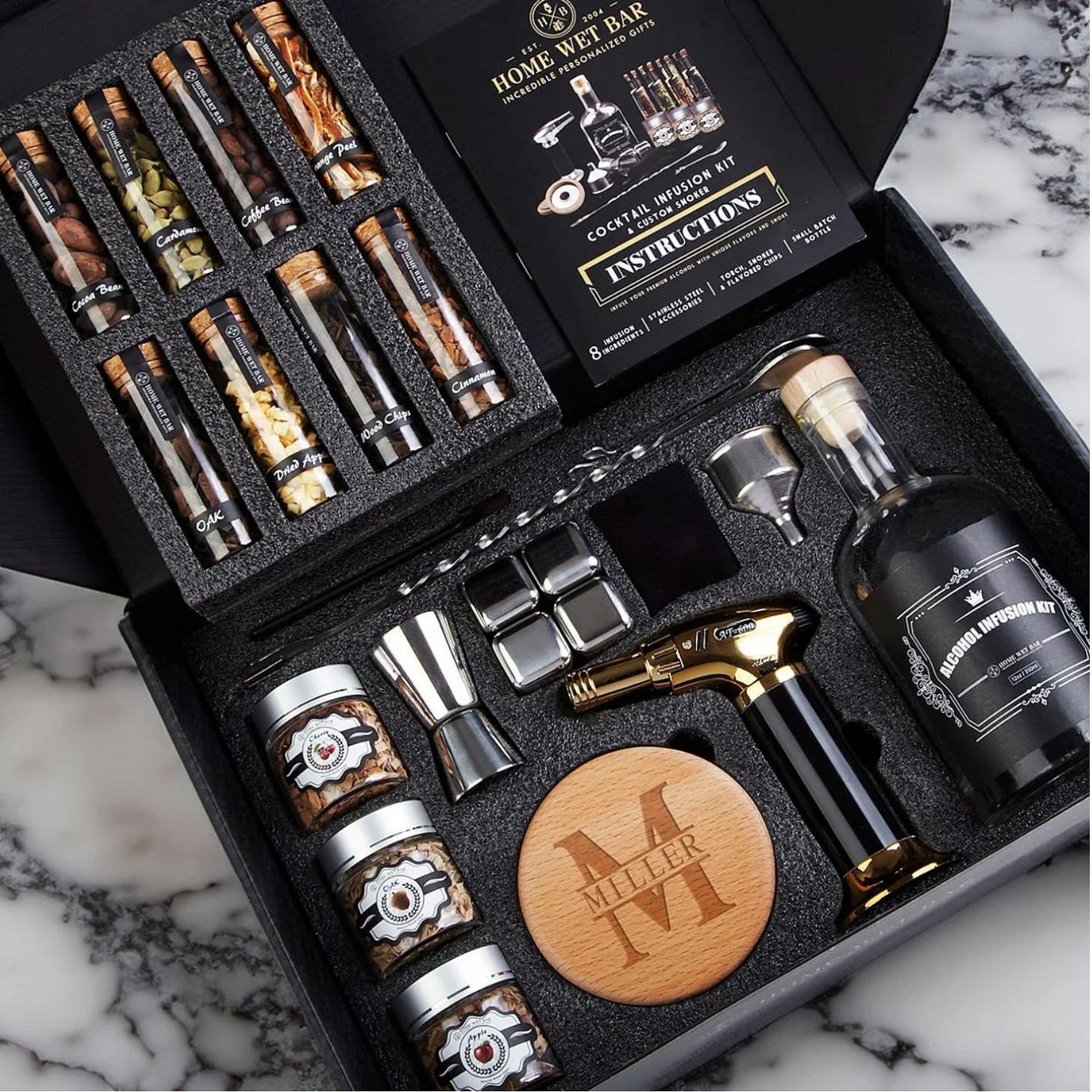Seeds of Smoke: How the American Revolution Sparked Cigar Culture
How war, scarcity, and seeds from Havana sparked a culture.
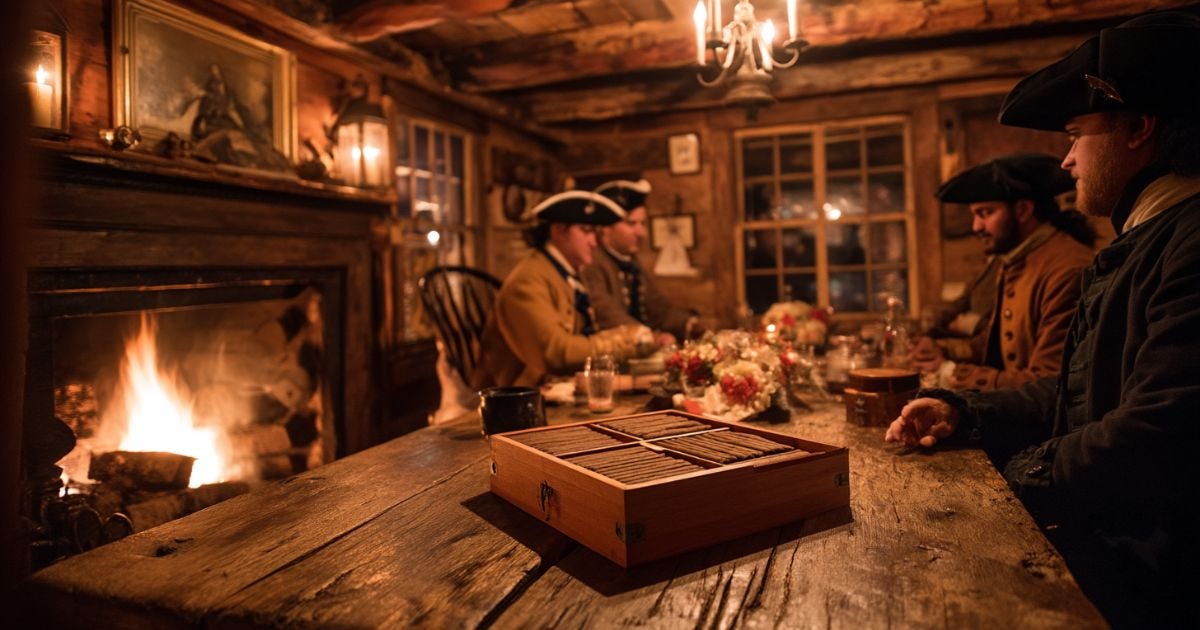
Listen While You Read
Hit play on the audio companion and let the story unfold while you enjoy the read.
The crackle of firewood, the low murmur of voices, and the faint haze of tobacco smoke drifting across a colonial tavern — this was the backdrop of the American Revolution cigar history. Long before cigars became a symbol of luxury, they were tied to the turbulence of war, scarcity, and the birth of a nation.
In this story, we trace the unlikely journey of how a Revolutionary general carried Havana seeds to New England soil, how the British tried to snuff out tobacco itself, and how those early sparks grew into the culture of cigars in America. It’s a tale of resilience, ritual, and the smoky threads woven into the fabric of independence.
Key Takeaways ✨
🌱 A Revolutionary War general planted the first seeds of what became the famed Connecticut wrapper.
🔥 The Tobacco War nearly destroyed the colonies’ lifeline, reshaping how cigars were valued.
🍂 Early imports of Havana cigars gave colonists a taste for fine tobacco long before U.S. factories rose.
🇺🇸 The American Revolution did more than win freedom — it sparked the beginnings of a unique American cigar culture.
Before the Revolution – Tobacco and Smoke in the Colonies
Long before cigars curled through the smoke-filled parlours of America, tobacco was already the lifeblood of the colonies. In Virginia and Maryland, tobacco wasn’t just a crop — it was currency. Farmers were paid in hogsheads of cured leaf, debts were settled with bundles of tobacco, and even clergy salaries could be measured in pounds of dried Virginia gold.
Yet for all its dominance, cigars were still a rare sight. Colonists preferred pipes, a tradition inherited from Native peoples who had shared tobacco as a ceremonial plant. Smoking a pipe was a familiar image: a planter in Williamsburg puffing while reading the London papers, or a tavern keeper offering pipe tobacco alongside ale and rum. Cigars, by contrast, were foreign, exotic, and usually imported from Havana at considerable expense. Only wealthy merchants or governors might casually light one after a dinner party.
Early Imports of Havana Cigars
The first Havana cigars trickled into colonial ports during the 1700s, carried in the holds of merchant ships trading sugar, molasses, and rum. Records from Boston and New York show that boxes of cigars were occasionally auctioned alongside imported wines. They were prized not just for their flavor but for their novelty — something that set a gentleman apart.
Still, cigars remained a curiosity. They lacked the mass presence that tobacco pipes commanded. What changed everything wasn’t fashion or trade alone, but the arrival of a battle-hardened general returning from the Caribbean with a pocketful of seeds and a vision that would reshape American smoking forever.
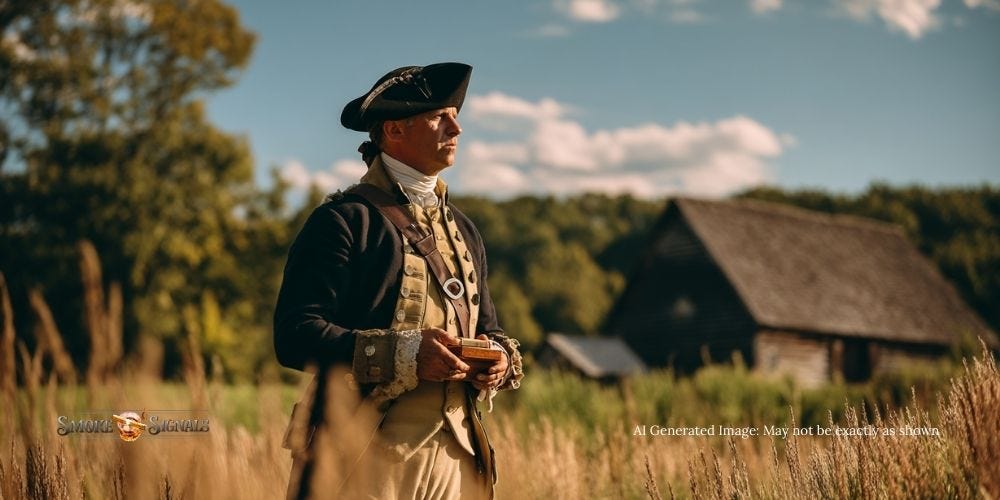
Israel Putnam – The General Who Brought Seeds of Smoke
In 1762, years before the colonies would rise in rebellion, Israel Putnam was already a seasoned soldier. Fresh from the campaigns of the French and Indian War, he joined an expedition to Havana during Britain’s brief capture of the city. Amid the cannons and chaos, Putnam discovered something unexpected: the allure of Cuban cigars.
Legend has it that when he returned to his Connecticut farm, he didn’t come home empty-handed. Alongside souvenirs of war, he carried boxes of Havana cigars — and more importantly, a pouch of Cuban tobacco seeds.
Planting those seeds in New England soil, Putnam began experimenting with cultivation. The result was hardy tobacco that thrived in the Connecticut River Valley, eventually giving birth to the celebrated Connecticut wrapper. This leaf would one day become a hallmark of premium cigars worldwide.
If you’d like a deeper dive into what makes the Connecticut wrapper so unique, I’ll be writing a complete guide on it over at the Cigar & Whiskey Guide.
As Holt’s Cigar Clubhouse notes, “It was General Israel Putnam who carried Havana cigars and seeds back from Cuba, planting the very first chapter of cigar culture in America” (Holt’s History of Cigars in the U.S.).
What Putnam may not have realized then was how revolutionary this small act would be. A military man, hardened by campaigns and skirmishes, had inadvertently sewn the threads of a cultural revolution that would run parallel to the political one brewing in Boston and Philadelphia.
Havana Influence on Colonial Tastes
Once colonists had a taste of Havana leaf, there was no turning back. The smooth draw and rich flavor stood in sharp contrast to the rougher tobacco often smoked in pipes. Officers, merchants, and tavern patrons who managed to get their hands on these cigars quickly elevated them to a mark of refinement. In a society where even rum was rationed and luxuries scarce, to hold a Havana cigar between one’s fingers was to have a symbol of sophistication.
Putnam’s seeds would take years to mature into a thriving wrapper tradition, but by the eve of the Revolution, cigars were no longer a distant curiosity. They had begun to weave their way into the rituals of soldiers, statesmen, and the social fabric of a nation ready to ignite.
War and Tobacco – The Revolutionary Disruption
By the late 1770s, tobacco wasn’t just a crop — it was lifeblood for the colonial economy. In Virginia, mainly, hogsheads of cured leaf represented wealth, trade leverage, and political power. The British knew this all too well. In 1780, as the Revolution raged on, they struck a calculated blow not with musket balls but with torches.
The campaign became known as the Tobacco War. Redcoats swept through the James River region of Virginia, seizing or burning tens of thousands of hogsheads. Entire warehouses of tobacco went up in flames, choking the air with a different kind of smoke. The goal was simple: cripple the colonies’ ability to fund their rebellion.
As the Encyclopedia Virginia explains, “The destruction of tobacco was not only economic sabotage but a psychological weapon, meant to break the back of Virginia planters and the rebellion they supported” (Encyclopedia Virginia – Tobacco in Colonial Virginia).
The result was scarcity. Tobacco became more precious than ever, and cigars, still rare and imported in limited quantities, turned into a luxury item. For many colonists, to light a cigar during these years was more than a personal indulgence — it was a quiet act of defiance.
Taverns, Camps, and Rituals
In smoky taverns of Boston and Philadelphia, and around campfires in Virginia, cigars began to take on a symbolic role. Officers who could share a Havana or a Connecticut-rolled stick with their men created a moment of unity — a brief pause in the uncertainty of war. Smoke rose into the night not just as habit but as ritual, a fragile thread of comfort in a time when even survival was in question.
The Revolutionary War didn’t just threaten lives and liberties — it reshaped how Americans thought about tobacco and cigars. The scarcity, the destruction, and the resilience that followed would all become part of the identity of cigar culture in the new republic.
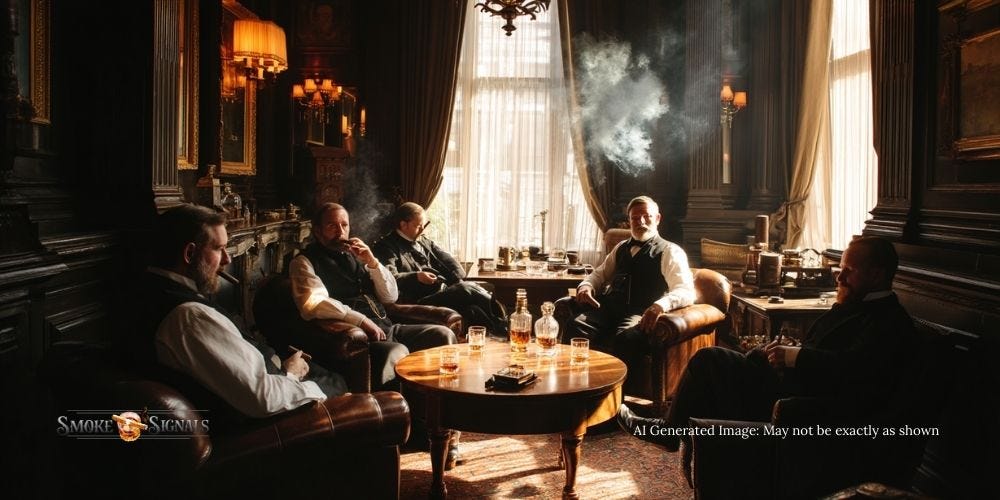
After the Revolution – Birth of an American Cigar Identity
When the war ended and independence was secured, tobacco fields once scorched by British fire began to thrive again. The seeds planted by Israel Putnam now had a new role: shaping a distinctively American cigar identity. In the fertile soil of the Connecticut River Valley, the broadleaf tobacco he introduced grew strong and resilient. Over time, farmers refined the process, creating what would be known as the Connecticut wrapper — prized for its silky texture and balanced flavor.
Meanwhile, imported Havana cigars continued to make their way into Boston, New York, and Philadelphia. For veterans of the Revolution, enjoying one was no longer just a luxury — it carried echoes of the struggles they had endured. Cigars became a way to mark occasions, to gather in taverns or parlours, and to celebrate the fragile but hard-won freedoms of the new nation.
Affiliate Link to Home Wet Bar
—-
The broader story is clear: tobacco wasn’t simply a product; it was the foundation of economies and cultures. As the Smithsonian Magazine notes, “Tobacco helped shape the United States, influencing everything from trade to politics to daily rituals” (Smithsonian – How Tobacco Built America). Cigars, once rare curiosities, were now part of that shaping force.
From Imports to Homegrown Industry
By the turn of the 19th century, the United States was no longer just a consumer of imported cigars. Small workshops in New England and Pennsylvania began rolling their own, often using Connecticut-grown wrappers with filler imported from the Caribbean. This marriage of domestic and foreign leaf gave American cigars a unique character — one born of both war and innovation.
What started as a general’s souvenir had now become a growing trade, laying the groundwork for the cigar boom that would define the 19th century.
Cigar Culture in the 19th Century – From Revolution to Tradition
By the early 1800s, cigars had taken on a life of their own in the United States. What began as a novelty in colonial taverns was now an industry. In towns across Pennsylvania, New York, and Connecticut, small factories sprang up, rolling cigars by the thousands. Immigrant labourers, many from Germany and Eastern Europe, brought their skills to the trade, giving rise to the bustling cigar-making districts that still left their mark on cities like Lancaster and New Haven.
Cigars were no longer reserved for merchants or officers. Farmers, craftsmen, and eventually even factory workers began to enjoy them. The humble “stogie” — named after the Conestoga wagons of Pennsylvania — became the cigar of the working man, often smoked at the end of a long day’s labour. In contrast, wealthier Americans reached for long Havanas or Connecticut-wrapped sticks, puffed slowly in gentlemen’s clubs where politics and commerce mixed freely.
The symbolism was evolving. Cigars were still tied to prestige, but they were also becoming democratic — a smoke for every station in life. In the same way the Revolution had birthed a republic, so too had it birthed a cigar culture that crossed class boundaries.
From Soldiers to Statesmen
The next generation of American leaders embraced cigars with enthusiasm. Portraits and anecdotes reveal senators, governors, and presidents smoking them as part of their public image. A good cigar was as much a mark of statesmanship as a quill pen or a glass of whiskey. Soldiers who had once huddled around campfires in the Revolution were now veterans building businesses and communities, often with a cigar still in hand.
By the mid-19th century, cigars had become a fixture in American life — a ritual that stretched from the smoky halls of Congress to the porches of small-town homes. What had begun with Putnam’s Cuban seeds had grown into a tradition woven deeply into the identity of the young nation.
Legacy – Why the Revolution Still Shapes American Cigar Culture
More than two centuries later, the Revolutionary spark still lingers in the way Americans see cigars. They are more than rolled leaves of tobacco — they are artifacts of resilience, independence, and ritual. When a cigar is lit today, it carries the echoes of those first Havana seeds sown in Connecticut soil, the smoke that curled above campfires at Valley Forge, and the defiance of planters who rebuilt after the Tobacco War.
The Connecticut wrapper, born from Putnam’s Cuban seeds, remains one of the most sought-after leaves in the cigar world, admired for its silky texture and approachable flavor. Every puff of a Connecticut-wrapped cigar is, in a sense, a draw from the past — a living reminder of how war, trade, and tradition shaped America’s smoking culture.
The Revolutionary War gave the nation its independence, but it also laid the groundwork for numerous cultural legacies. Among them, cigar culture stands as one of the most enduring. To hold a cigar is to keep history, a tangible connection to the men and women who endured scarcity, celebrated freedom, and built a new identity from smoke and soil.
Conclusion
The story of cigars in America doesn’t begin with Gilded Age factories or 20th-century icons — it begins in the Revolution. It starts with a general’s pouch of seeds, the British torching warehouses along the James River, and the quiet rituals of soldiers and statesmen finding solace in smoke.
The American Revolution didn’t just spark political change — it sparked cigar culture. Every draw today carries that legacy, a reminder that the things we savour are often born in the struggles that define us.



